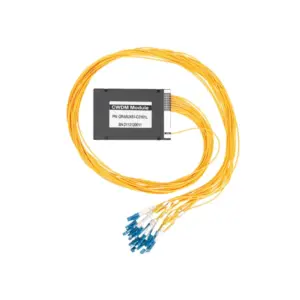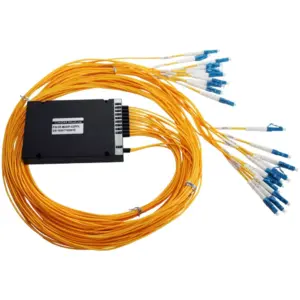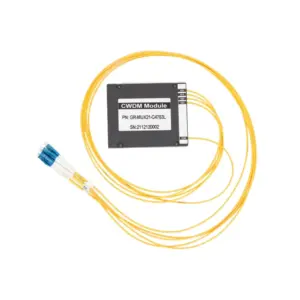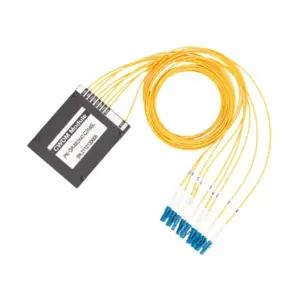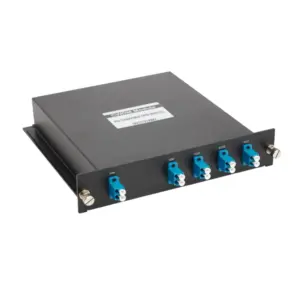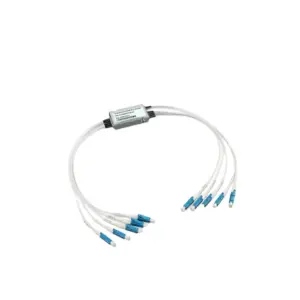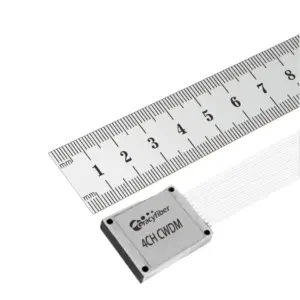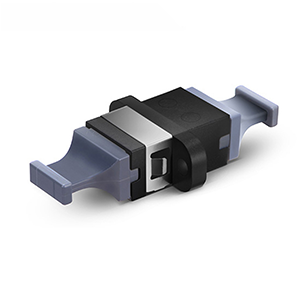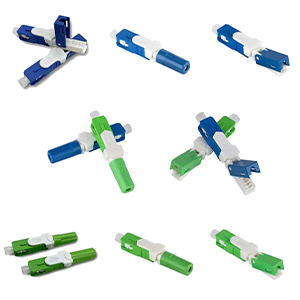Thank you very much for choosing to read this article. Today I will introduce to you CWDM (Coarse Wavelength Division Multiplexing) optical fiber and its important role in optical fiber communication. CWDM optical fiber, as a multi-wavelength transmission solution, provides excellent performance and flexibility for modern network connections.
Overview of CWDM optical fiber
CWDM (Coarse Wavelength Division Multiplexing) optical fiber is a multi-wavelength transmission solution for optical fiber communications. It achieves the multiplexing and simultaneous transmission of multiple signals by simultaneously transmitting multiple optical signals of different wavelengths in the optical fiber, thereby improving the transmission capacity and efficiency of the optical fiber.
CWDM optical fiber plays an important role in optical fiber communications. It enables the expansion and optimization of fiber optic communication systems by transmitting multiple signals on different wavelengths while sharing the same optical fiber. Compared with traditional single-wavelength transmission methods, CWDM optical fiber can transmit more signals in the optical fiber, improving fiber utilization and bandwidth capacity.
Working principle and technical specifications of CWDM optical fiber
CWDM (Coarse Wavelength Division Multiplexing) optical fiber uses multi-wavelength multiplexing technology to transmit multiple signals on the same optical fiber. The following is the working principle and key technologies of CWDM optical fiber:
-
Multi-wavelength multiplexing: CWDM optical fiber multiplexes multiple signals through different wavelengths and combines them onto the same optical fiber for transmission. Each signal is identified using a different wavelength for demultiplexing at the receiving end.
-
Wavelength selection: In CWDM fiber, each signal uses a different wavelength for transmission. The common CWDM wavelength range is 1270 nm to 1610 nm, usually divided into intervals of 20 nm. The transmitting end uses a CWDM laser to generate optical signals of different wavelengths, and then sends them out through the optical fiber.
-
Demultiplexing: At the receiving end, a CWDM multiplexer (Mux) is used to demultiplex the multiple transmitted signals. The CWDM multiplexer separates optical signals of different wavelengths and then transmits them to the corresponding receiving end equipment for processing.
The technical specifications of CWDM optical fiber are as follows:
-
Transmission distance: The transmission distance of CWDM fiber depends on many factors, including fiber quality, fiber attenuation and the use of optical amplifiers. Generally speaking, the transmission distance of CWDM optical fiber can reach dozens of kilometers.
-
Wavelength range: The wavelength range of CWDM fiber is usually 1270 nm to 1610 nm, where the interval between each wavelength is 20 nm. Commonly used wavelengths include 1270 nm, 1290 nm, 1310 nm, 1330 nm, 1350 nm, 1370 nm, 1390 nm, 1410 nm, 1430 nm, 1450 nm, 1470 nm, 1490 nm, 1510 nm, 1530 nm, 1550 nm, 1570 nm, 1590 nm and 1610 nm.
-
Signal transmission rate: CWDM optical fiber can support different data transmission rates, including 1 Gbps, 10 Gbps, 25 Gbps and 40 Gbps, etc. The specific transmission rate depends on the capabilities of the fiber optic equipment and optical modules.
It should be noted that the technical specifications of CWDM fiber may vary depending on the supplier and the actual application. When deploying CWDM fiber optic systems, it is necessary to select appropriate technical specifications based on specific needs and equipment compatibility.
Advantages and application scenarios of CWDM optical fiber
CWDM (Coarse Wavelength Division Multiplexing) optical fiber has many advantages compared with other transmission technologies, making it widely used in various application scenarios. The following are the advantages and application scenarios of CWDM fiber:
-
Low cost: Compared with dense wavelength division multiplexing (DWDM) technology, CWDM fiber equipment and deployment costs are lower. The optical components and fiber connection equipment used in CWDM optical fiber are relatively simple and more affordable. This makes CWDM optical fiber an ideal choice for small and medium-sized enterprises and organizations.
-
Flexibility and scalability: CWDM fiber has a wide wavelength interval, usually 20 nanometers (nm). This makes it highly flexible and scalable when deployed, and wavelengths can be added or adjusted as needed to adapt to different network needs and expansion requirements. This makes CWDM fiber a viable solution for gradually increasing network capacity.
-
Easy to integrate and manage: The optical equipment and fiber connection technology used by CWDM optical fiber have been widely used and mature. This makes CWDM fiber simpler and more reliable in terms of integration and management. It is compatible with existing fiber optic equipment and network infrastructure, reducing the complexity of deployment and maintenance.
-
Wide range of application scenarios: CWDM optical fiber is widely used in many application scenarios. In enterprise networks, CWDM fiber can be used to connect high-speed communications between remote office locations, data centers, and servers. In terms of data center interconnection, CWDM optical fiber provides high-bandwidth and low-latency connections to meet the needs of large-scale data transmission. In a metropolitan area network (MAN), CWDM optical fiber supports data transmission and communication between different institutions and locations.
CWDM optical fiber components and equipment
CWDM (Coarse Wavelength Division Multiplexing) optical fiber uses a series of key components and equipment to achieve multi-wavelength multiplexing and demultiplexing. The following are the main components and equipment of CWDM fiber:
-
CWDM module: CWDM module is a key component used to generate and receive optical signals of different wavelengths. It consists of multiple lasers and receivers, each corresponding to a specific wavelength. The CWDM module can combine optical signals of different wavelengths into a composite optical signal, or demultiplex the composite optical signal into optical signals of different wavelengths.
-
Fiber optic multiplexer (Mux): Fiber optic multiplexer is a key device used to combine optical signals of multiple wavelengths onto one optical fiber. It receives optical signals from different CWDM modules and combines them into a composite optical signal for transmission through a CWDM optical fiber.
-
Fiber optic demultiplexer (Demux): Fiber optic demultiplexer is a key device used to separate optical signals of different wavelengths from composite optical signals. It receives the composite optical signal from the CWDM fiber, demultiplexes it into multiple individual wavelength optical signals, and then transmits them to the corresponding receiver.
In addition to these key components, CWDM fiber also needs to be compatible and interoperable with other equipment. The following are things to note regarding compatibility and interoperability of CWDM fiber with other devices such as fiber switches and routers:
-
Fiber optic switch: CWDM fiber can be compatible with fiber optic switches and used to provide high-capacity and multi-wavelength fiber optic transmission. Optical fiber switches usually have SFP (Small Form-factor Pluggable) or SFP+ slots, which can be inserted into optical modules that adapt to CWDM wavelengths.
-
Router: CWDM optical fiber can also be compatible with routers and used to achieve high-speed data transmission and network connections. Similar to fiber optic switches, routers usually have SFP or SFP+ slots into which optical modules adapted to CWDM wavelengths can be inserted.
It is necessary to ensure that the optical module is selected to adapt to the CWDM wavelength and that the interface type and rate of the optical module and the optical fiber equipment are compatible. In addition, ensure that the fiber connections and fiber distances between fiber optic equipment and other network equipment meet technical specifications and requirements.
To sum up, CWDM optical fiber uses key components such as CWDM modules, fiber multiplexers and demultiplexers to achieve multi-wavelength multiplexing and demultiplexing. It is compatible and interoperable with equipment such as fiber optic switches and routers, enabling efficient fiber optic transmission and network connections.
Recommendations for deployment and configuration of CWDM optical fiber
The deployment and configuration of CWDM (Coarse Wavelength Division Multiplexing) optical fiber requires some guidance and best practices. The following are recommendations for deployment and configuration of CWDM fiber:
Fiber optic cabling:
- Determine the fiber path: Before deploying CWDM fiber, determine the path and connection points of the fiber. Consider the shortest path, minimal bending and pulling forces, and minimal sources of interference.
- Use high-quality optical fiber: Choose high-quality optical fiber that meets CWDM optical fiber requirements to ensure the stability and reliability of signal transmission.
- Pay attention to fiber optic connections: When connecting optical fibers, ensure the quality and accuracy of the connectors to avoid fiber connection losses and failures.
Equipment configuration:
- CWDM module selection: Select the appropriate CWDM module according to your needs, taking into account factors such as the number of wavelengths required, signal transmission distance, and network capacity.
- Equipment compatibility: Ensure compatibility and interoperability between the selected CWDM module and other fiber optic equipment (such as switches and routers), including matching of interface type and rate.
- Fiber patch management: To simplify management and troubleshooting, it is recommended to use standardized patch cords and labels so that fiber patch cords can be quickly identified and replaced when needed.
Network optimization:
- Wavelength planning: Carry out effective wavelength planning to avoid interference and conflicts between different wavelengths. Ensure that each wavelength is sufficiently spaced spectrally to reduce crosstalk and mutual influence.
- Signal gain and attenuation control: In CWDM fiber, ensure control of signal gain and attenuation to maintain proper signal strength and quality. Signal power can be adjusted using fiber optic amplifiers or attenuators.
- Fault monitoring and management: Use appropriate monitoring tools and equipment to conduct real-time monitoring and fault management of CWDM optical fibers to identify and solve any problems in a timely manner.
Device selection and deployment strategy:
- Consider network requirements: Select appropriate CWDM optical fiber equipment based on specific network requirements and application scenarios. Consider factors such as bandwidth requirements, transmission distance, scalability, and budget.
- Future scalability: Consider future network expansion needs in equipment selection and deployment strategies. Choose equipment with sufficient wavelength capacity and scalability so that you can easily add new wavelengths and expand network capacity when needed.
To sum up, the deployment and configuration of CWDM fiber needs to consider best practices in fiber cabling, equipment configuration and network optimization. Selecting the appropriate equipment and deployment strategy can meet specific network needs and provide a stable and reliable fiber transmission solution.
Market prospects and application cases of CWDM optical fiber
CWDM (Coarse Wavelength Division Multiplexing) optical fiber has broad market prospects in the communications field and is widely used in multiple industries. The following is an analysis of the CWDM optical fiber market prospects and application cases:
-
Industry trends: With the continuous growth of data traffic and bandwidth requirements, CWDM optical fiber is gradually favored by the market as an economical and affordable optical fiber transmission solution. Industry trends include increasing network capacity, increasing data transfer speeds, supporting cloud computing and data centers, and more.
-
Competitive landscape: There are many suppliers and manufacturers in the CWDM optical fiber market, providing CWDM equipment and solutions of various types and specifications. The main competitive factors include product quality, performance, price, reliability and technical support.
-
Market size: According to market research reports, the CWDM optical fiber market is expected to maintain steady growth in the next few years. This is mainly due to the growing data transmission needs and the need for high-capacity fiber optic transmission. With the development of emerging technologies, such as 5G communications, Internet of Things and high-definition video transmission, the market size of CWDM optical fiber is expected to further expand.
Summarize:
In the future, with the development of emerging technologies and applications, such as 5G networks, cloud computing and the Internet of Things, CWDM optical fiber will continue to play an important role in meeting growing network demands and providing higher bandwidth and reliability. The market prospect of CWDM optical fiber is very broad, and industry trends, competition landscape and market size all show its huge potential. We also provide some actual CWDM optical fiber application cases, demonstrating its successful application in different industries.
If you are interested in CWDM optical fiber, please consider contacting us, we will provide you with professional advice and support to help you choose the CWDM optical fiber solution that suits your needs and achieve high-performance network connections for multi-wavelength transmission.
- What does CWDM stand for in fiber?
- What is CWDM fiber channel?
- What is the difference between CWDM and DWDM?
- What is the standard of CWDM?
- How does CWDM work?
- How does a CWDM work?
- Where is CWDM used?
- Is DWDM better than CWDM?
- What are the advantages of CWDM?


